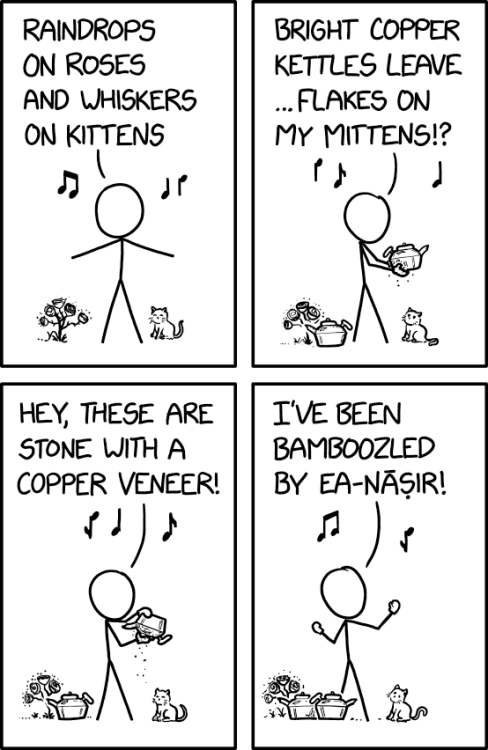Category Archives: Tumblr
you better watch out you better watch out YOU BETTER WATCH OUT
you better watch out
you better watch out
YOU BETTER WATCH OUT
70sscifiart: Cover art to Look and Learn, December 1976
debris and detritus 2025-12-24 15:36:32
debris and detritus 2025-12-24 14:40:27
Photo

In 1899, people were walking around shouting ‘23’ at each other and laughing, and confused reporters…
ALT
In 1899, people were walking around shouting ‘23’ at each other and laughing, and confused reporters were writing articles trying to figure out what it meant.
Transcript Under the Cut
ea-nasir-1750: tacofriend: todays-xkcd:When an Ur guy / sells…

When an Ur guy / sells Nanni things / but the copper’s
bad, / He simply records his complaint for all time / “I got a bad deal /
I’m maaaaad”“,”poster”:[{“media_key”:”52f9c87444eadd8b5882e034c1942c81:3d9e8cfc64207cf6-5d”,”type”:”image/jpeg”,”width”:480,”height”:360}],”metadata”:{“id”:”c3233lSZ76k”},”attribution”:{“type”:”app”,”url”:”https://www.youtube.com/watch?v=c3233lSZ76k”,”app_name”:”youtube”,”display_text”:”Teza’s Tunes – Bamboozled by Ea-Nasir (My Favorite Things)”}}”> :/ kinda mean hearted






